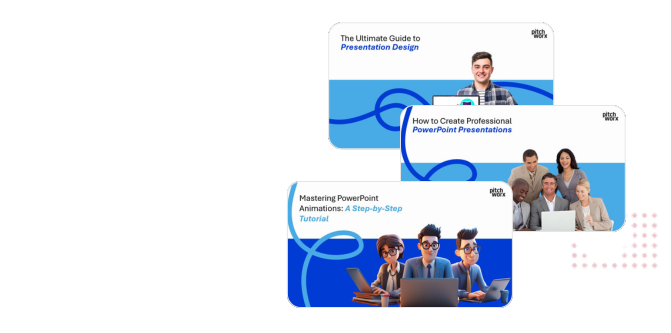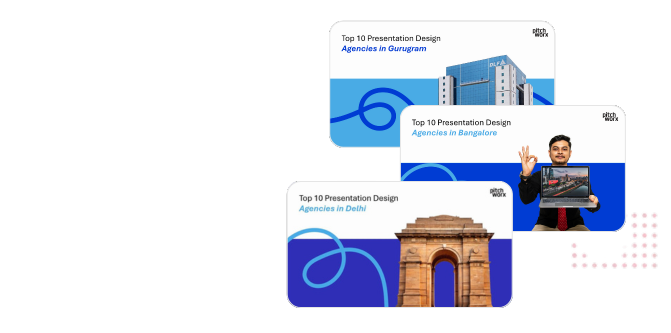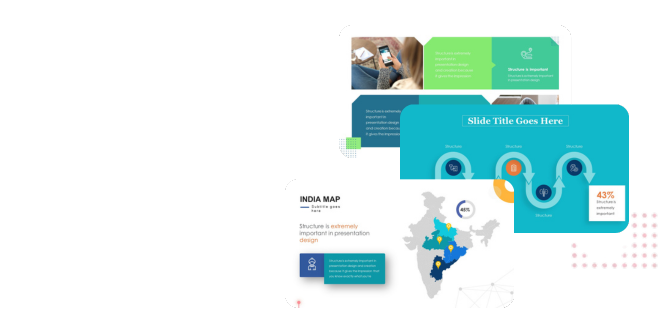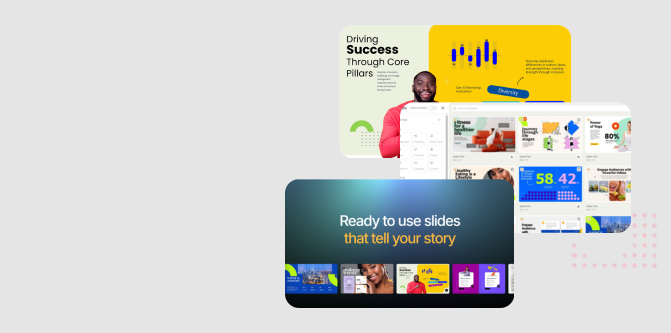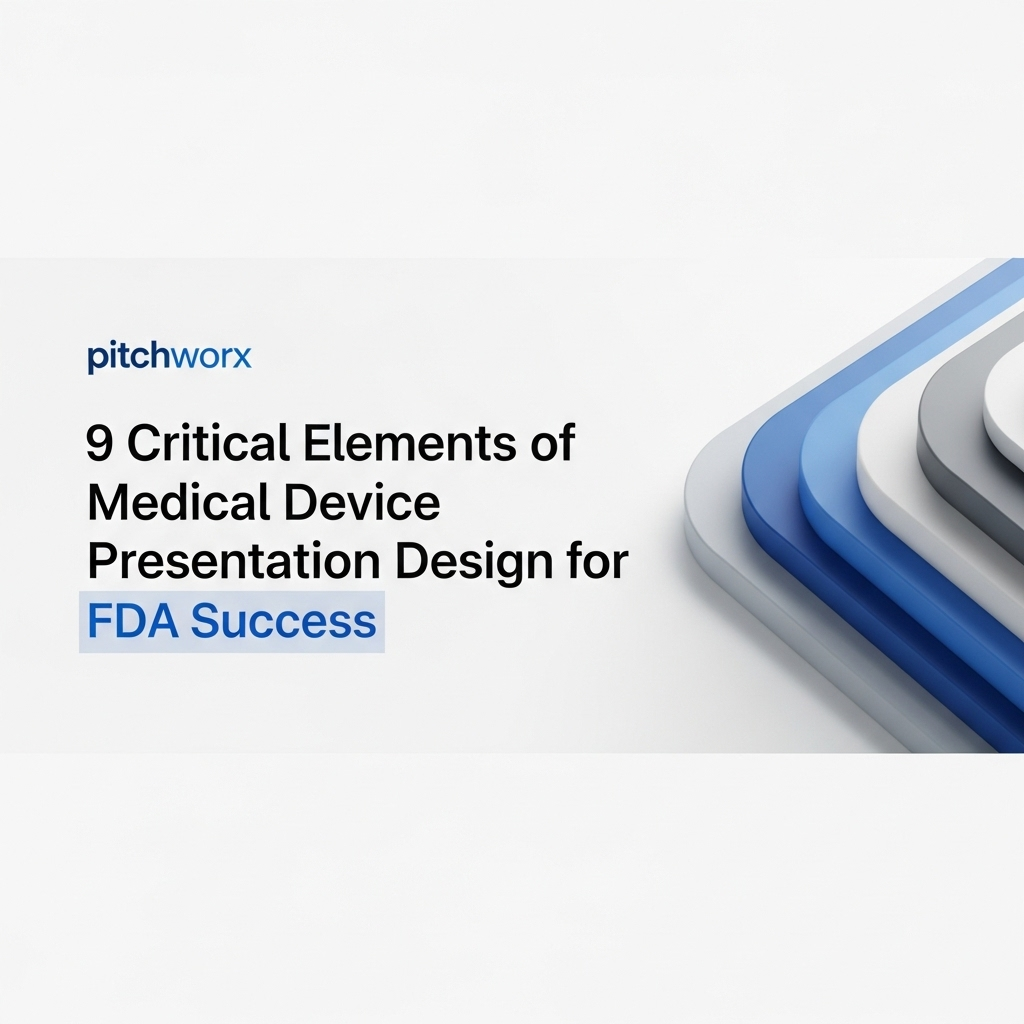Navigating the Dual Challenge of Medtech Communication
Imagine this: a brilliant team of bioengineers develops a groundbreaking medical device with the potential to save thousands of lives. They have robust clinical data and a clear market need. Yet, they falter. Their presentation to an FDA advisory panel is deemed confusing, their pitch to investors lacks a clear value proposition, and their materials for clinicians are visually dense and impenetrable. This scenario is all too common. Effective medical device presentation design is not just about aesthetics; it’s a critical business function that balances scientific rigor with regulatory precision. It’s a specialized discipline where a single misstep in communication can jeopardize funding, delay approvals, and ultimately, hinder patient access to innovation.
Unlike a standard corporate slideshow, a medtech presentation operates under immense scrutiny. Every claim must be substantiated, every visual must be accurate, and the entire narrative must navigate the stringent guidelines set by bodies like the Food and Drug Administration (FDA). In our 13+ years of experience, we’ve seen that the most successful medtech companies are those that treat their presentation design with the same level of discipline they apply to their R&D.
Quick Answer
Medical device presentation design is the specialized process of creating clear, compliant, and compelling visual materials for medtech products. With the global medical technology market projected by Statista to reach nearly $800 billion by 2030, effective communication is critical for securing funding and regulatory approval. Success hinges on a trifecta of core principles:
- Unwavering regulatory compliance, especially with FDA guidelines.
- Absolute clarity in communicating complex clinical data.
- Demonstrable credibility through professional, evidence-backed design.
Table of Contents
- The High-Stakes Problem: Why Standard Presentation Tactics Fail in Medtech
- The Root Causes of Ineffective Medical Device Presentations
- The Solution: A Framework for Compliant and Compelling Design
- Step-by-Step: Building an FDA-Compliant Medical Device Presentation
- Common Pitfalls and How to Avoid Them
- Beyond Compliance: Designing for Impact and Adoption
- Frequently Asked Questions
- Conclusion
The High-Stakes Problem: Why Standard Presentation Tactics Fail in Medtech
The core problem is a mismatch of context. A presentation designed for a software launch cannot be repurposed for a surgical tool. The audiences are different, the stakes are higher, and the regulatory environment is unforgiving. Standard presentation tactics often prioritize simplicity and emotional appeal over precision and substantiation, which is a recipe for disaster in the medical field.
Consider the distinct challenges:
- Extreme Information Density: Clinical trial results, mechanism of action (MOA) diagrams, and patient outcome data are inherently complex. Trying to cram this onto a slide without a clear visual hierarchy leads to confusion, not conviction.
- Diverse, Expert Audiences: A single deck might need to persuade venture capitalists, clinical advisory boards, FDA reviewers, and hospital procurement teams. Each group has different priorities and levels of technical understanding. A one-size-fits-all approach inevitably fails to connect with anyone.
- Regulatory Scrutiny: In the US, the FDA’s Office of Prescription Drug Promotion (OPDP) heavily polices how medical products are presented. Any claim that is not supported by evidence, implies an unapproved use (off-label), or fails to provide “fair balance” between risks and benefits can result in warning letters and severe penalties.
- Patient Safety Implications: A misinterpretation of a device’s proper use, efficacy, or risk profile, caused by a poorly designed slide, can have direct consequences on patient health. The ethical burden is immense.
The Root Causes of Ineffective Medical Device Presentations
From our work with numerous companies in the sector, we’ve identified recurring patterns that lead to ineffective presentations. These are not failures of science but failures of communication strategy. Recognizing them is the first step toward correction.
1. Treating the Presentation as a Data Dump
The most common mistake is believing that more data equals a better presentation. Engineers and scientists, proud of their work, often attempt to show everything. This results in slides cluttered with tables, charts with unreadable axes, and paragraphs of text. An effective presentation is not a document; it’s a story supported by data. The goal is to guide the audience to a conclusion, not to drown them in information.
2. Absence of a Clear Narrative Structure
Many medtech decks jump randomly between the problem, the technology, the clinical data, and the market. A powerful presentation follows a logical arc: the significant unmet clinical need, the limitations of current solutions, the introduction of your device as the hero, the evidence supporting its efficacy and safety, and the vision for its market adoption. Without this narrative, the audience is left disoriented.
3. Neglecting Audience-Specific Content
Presenting a deep-dive on the molecular mechanism of action to a group of healthcare economists is as ineffective as showing a detailed reimbursement model to a room of surgeons. Our approach for our healthcare clients involves creating a core “master deck” from which modular, audience-specific versions can be easily generated, ensuring relevance for every stakeholder.
The Solution: A Framework for Compliant and Compelling Design
To solve these complex challenges, a systematic framework is required. We structure our medical device presentation design process around three core pillars: Clarity, Compliance, and Credibility. This “3C Framework” ensures that the final product is not only visually engaging but also scientifically sound and regulatorily robust.
Pillar 1: Clarity
Transforming complex data into easily digestible visual stories. This involves strategic data visualization, a minimalist design aesthetic, and a relentless focus on the key takeaway for each slide.
Pillar 2: Compliance
Building the presentation on a foundation of regulatory awareness. Every claim, image, and statement is vetted against guidelines for fair balance, on-label use, and data substantiation.
Pillar 3: Credibility
Projecting an image of professionalism and scientific authority. This is achieved through high-quality graphic design, consistent branding, meticulous source referencing, and an overall polished execution.
Our Expertise in Action
With 13+ years of presentation design experience and over 150,000 slides created, PitchWorx is an ISO 27001 certified agency. We specialize in transforming complex information for Fortune 500 companies and innovative startups across the US, India, and UAE markets, with a dedicated focus on the rigorous demands of the healthcare and medtech sectors.
Step-by-Step: Building an FDA-Compliant Medical Device Presentation
Applying the 3C framework involves a structured, multi-stage process. Here’s a look at how our team approaches the development of a compliant and compelling medical device presentation.
Step 1: The Content and Claims Audit
Before any design begins, we conduct a thorough review of the source material. Every statement is flagged and categorized: Is it a proven data point from a clinical trial? Is it a forward-looking statement? Is it a competitive claim? Each claim must be mapped to a specific, verifiable source. This initial audit is the bedrock of compliance.
Step 2: Structuring the Core Narrative
Next, we work with the client’s subject matter experts to build the story. We use a storyboard approach to outline the flow, ensuring each section logically transitions to the next. For early-stage companies, this often involves crafting compelling investor pitch decks that balance the scientific depth with a clear articulation of the market opportunity and business model.
Step 3: Advanced Data Visualization
This is where raw data is transformed into insight. Instead of pasting a table from a research paper, we design custom charts, graphs, and diagrams that highlight the most important findings. For MOA slides, we often use simple animations or 3D models to clarify complex biological processes. The rule is simple: the visual should reduce cognitive load, not add to it.
Step 4: Designing for “Fair Balance”
“Fair balance” is a key FDA principle requiring that the presentation of benefits and risks be comparable. Design plays a crucial role here. You cannot present benefits in a large, bold font while hiding risks in a tiny footnote. Visual hierarchy, placement, and prominence must be equitable. A Deloitte report on building trust in healthcare emphasizes that transparent communication about both efficacy and risks is fundamental to gaining acceptance from clinicians and patients.
| Aspect | Non-Compliant Approach (High Risk) | Compliant Approach (Best Practice) |
|---|---|---|
| Benefit Claim | Large, 32pt headline: “Unprecedented 75% Tumor Reduction!” | Clear, 24pt headline: “Primary Endpoint Met: 75% Median Tumor Reduction” |
| Risk Information | 8pt font in a footer: “Adverse events include nausea, fatigue.” | Prominent sidebar or lower-third box with 14pt font: “Key Safety Information: Most common adverse events (>15%) were nausea and fatigue.” |
| Data Source | No on-slide citation. | Clear on-slide citation: “Source: Phase III VITAL-01 Study, Data on file.” |
Step 5: Rigorous Referencing and Review
The final stage involves a multi-layer review process. We ensure every data point is correctly cited on the slide and cross-referenced in a concluding appendix. The deck is then reviewed by our team, the client’s subject matter experts, and, critically, their legal and regulatory affairs teams before being finalized.
Common Pitfalls and How to Avoid Them
Awareness of common mistakes can save significant time and reduce regulatory risk. Here are three of the most frequent and dangerous pitfalls we help our clients navigate.
- The Off-Label Promotion Trap: This occurs when language or visuals suggest a device can be used for a condition or patient population for which it does not have clearance or approval. For example, showing an image of a pediatric patient when the device is only approved for adults. Avoidance requires strict adherence to the approved indication statement throughout the presentation.
- Using Superlatives and Puffery: Words like “revolutionary,” “perfect,” “miraculous,” or “completely safe” are red flags for regulators. All claims must be objective and supported by data. Instead of “revolutionary results,” use “statistically significant improvement in primary endpoint.” This is a key part of our focus for clients in the United States market, where regulatory language is paramount.
- Misleading Data Visualization: This is a subtle but serious error. It includes practices like truncating the Y-axis on a chart to exaggerate an effect, using 3D chart effects that distort proportions, or using icons to represent quantities in a non-proportional way. All data visualizations must be an honest and accurate representation of the numbers. According to the FDA’s own Advertising & Promotion Guidelines, materials must not be false or misleading in any particular.
Beyond Compliance: Designing for Impact and Adoption
A compliant presentation is the baseline, but a great presentation goes further. The goal is not just to avoid regulatory trouble but to actively persuade, educate, and inspire confidence. Once compliance is assured, we can focus on elevating the design to drive adoption.
A powerful technique is the ethical use of patient case studies. By presenting anonymized patient journeys (with all necessary permissions), you can humanize the clinical data and demonstrate the real-world impact of the device. This transforms abstract statistics into a memorable story about improving lives.
Another key element is creating a modular design system. This is more than a template; it’s a library of pre-approved, compliant slides, charts, icons, and data visualizations. A surprising finding from our client work is that implementing such a system can reduce the time and cost of creating new presentations by up to 40%, as it allows marketing and sales teams to build new, compliant decks without starting from scratch.
Related Services
Frequently Asked Questions
1. What is the most important element of a medical device presentation?
While all elements are important, unwavering compliance is the foundation. Without it, even the most beautifully designed presentation can become a liability. Specifically, adhering to the FDA’s “fair balance” principle, which requires an equitable representation of risks and benefits, is paramount. All creative decisions must serve accuracy and compliance first.
2. How can I present complex clinical data without overwhelming the audience?
The key is ruthless simplification and clear visual hierarchy. For each piece of data, define the single most important message. Use callouts, color, and summary headlines to draw the eye to that key finding. Break down complex charts into a series of simpler “build” animations. The goal is to guide, not just display.
3. Can I use the same presentation for investors and doctors?
It is highly inadvisable. Investors are focused on market size, reimbursement strategy, and ROI. Clinicians are focused on patient outcomes, ease of use, and safety profiles. The most effective strategy is to build a comprehensive master deck and then create tailored versions for each specific audience, emphasizing the information most relevant to them.
4. What are the legal risks of a non-compliant presentation?
The risks are substantial. The FDA can issue warning letters that are publicly available and can damage a company’s reputation. They can also levy fines and, in severe cases, pursue legal action. Furthermore, a misleading presentation used in fundraising could expose a company to investor lawsuits. Professional, compliant design is a critical risk mitigation tool.
5. How much should I budget for professional medical device presentation design?
The cost varies based on the complexity, length, and scope (e.g., custom animations, 3D modeling). It should be viewed as an essential R&D and commercialization expense, not a simple marketing cost. Considering the high cost of a failed funding round or a regulatory delay, the ROI on professional design is significant.
6. How do you ensure all claims are properly referenced?
Our process includes a rigorous content audit phase. We work with the client to map every single claim to a specific source document. These references are included discreetly on each slide (e.g., “Data on File, XYZ Corp.”) and are compiled into a comprehensive bibliography slide at the end of the deck for full transparency and verification.
From Data to Decision: The Role of Strategic Design
In the end, medical device presentation design is about building bridges of understanding. It’s about bridging the gap between complex science and stakeholder comprehension, between innovative technology and regulatory approval, and between a promising device and its successful adoption in the market. By embracing a framework of Clarity, Compliance, and Credibility, medtech companies can transform their presentations from simple data reports into powerful tools for persuasion and progress.
Investing in strategic design is an investment in clarity. It ensures your innovation is not just seen, but understood, trusted, and ultimately, adopted. It’s the final, critical step in translating years of research and development into a tangible impact on patient care.
Ready to elevate your medtech presentations? Our presentation design services help businesses navigate complex regulatory landscapes in the US, India, and UAE markets. View our portfolio to see how we translate complex data into compelling stories.




